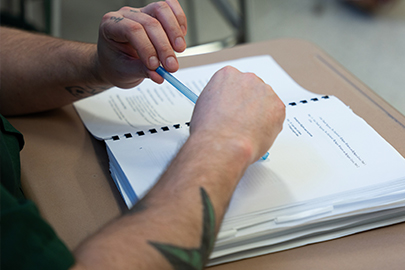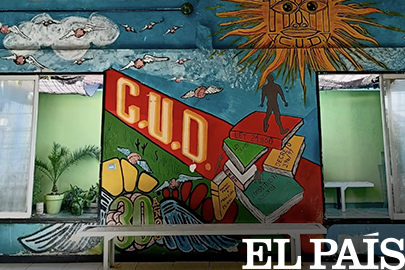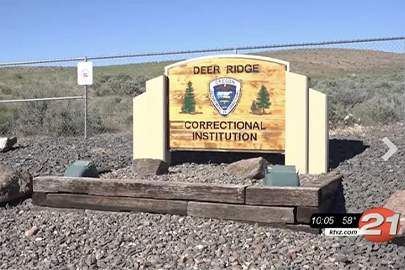Tanya Erzen, founder and former executive director of Freedom Education Project Puget Sound, a partner in BPI’s Consortium for the Liberal Arts in Prison, warns that in-person learning can’t be replaced with tablets in prison. This article, reproduced here, first appeared in Inside Higher Education.
People in prison have often been relegated to “better than nothing” education, writes Tanya Erzen, and the inequities could become more prevalent during the pandemic.
In mid-March, close to 80 women and trans people had been enrolled for eight weeks in German, biology, American government, American history in the 1960s, English, yoga and math classes in the Freedom Education Project Puget Sound program that I co-founded with students inside the prison at the Washington Corrections Center for women. Some hoped to graduate in June with their associate of arts degree from Tacoma Community College. Others were in the middle of applying for a new bachelor’s degree program slated to begin this fall in collaboration with the University of Puget Sound, where I’m also a professor.
Study halls were full. Spanish conversation hour was lively. The Ethics Bowl team prepared for an April competition with several universities. The film series, student-led literary magazine and gender studies workshop continued. Students eagerly anticipated our annual graduation ceremony. A renowned writer planned to visit in May.
In short, our program was a thriving miniature version of a traditional campus — yet in a maximum-security prison.
When the governor of Washington State issued orders to close educational institutions and businesses, our program knew the prison would follow. Our program staff members and professors decided immediately to stop in-person classes in the prison because of the possibility that one of us could transmit the virus to our vulnerable students. Their health and well-being were foremost in our planning. They attend college in an overcrowded prison built for 750 people but now holding around 900.
Next, we all had to figure out how to finish the semester in the prison where technology is nonexistent. Washington prisons do not allow access to the internet or the use of modified course management programs like Canvas or Blackboard for students in our program. Our 80 students share 15 laptops for typing papers. We shifted to a system of delivering paper packets to students, retrieving them, sending them to faculty for feedback and providing a new set of assignments and readings in a cumbersome two-week cycle.
Nothing proceeded smoothly. Some weeks, a staff member photocopied thousands of pages. Agreeing on a process to collect students’ work took weeks of meetings with our partners at the community college and the Department of Corrections.
Unlike most higher education programs in prisons across the country, we are extremely fortunate that we can still send messages to students through the internal communication system. Morale among students is low. They feel isolated and terrified. They struggle to complete work without the accountability of peers and professors. They miss being in a classroom with their fellow students because most can’t leave their units. They crave connections to the outside world. They write of loss and mourning.
This pandemic underscores the stark inequities that have always existed in prison: isolation, overcrowding and a lack of health care and mental health services. The Marshall Project reported that, as of May, as many as 25,239 people in prison had tested positive for COVID-19, but many states are not even testing prisoners. This humanitarian crisis unfolding in prisons is starkest in Ohio, where there is an 80 percent infection rate in some prisons, as Michelle Alexander noted in The New York Times. Prisons already represent our society’s racial, gender and economic inequities in a drastically crystallized form, and the pandemic has only intensified and exposed those inequities.
Equity and Excellence
What is the role of higher education in prison during this moment, and what will the future look like for education in prison?
The current crisis has revealed what students and practitioners in our field have always known: college in prison programs don’t just provide educational opportunities to earn a degree. They are robust ecosystem where students seek belonging, support, community, engagement and challenges. College in prison programs can lower the chance that people return to prison, increase economic opportunity and job success after release, and address concerns about public safety and the high cost of incarceration. Perhaps most important, higher education is also a rare space for connection with others — for critical engagement with unfamiliar people, texts and theories — and a place where students are students rather than a Department of Corrections-assigned number, “an inmate” or “an offender.”
The past few months have also exacerbated the continuing technological divide between prisons and the outside. It has demonstrated for students and faculty the value of in-person classes in prison and on campuses, as well as the need for technology that enhances and enriches that experience rather than replaces it.
Now, more than ever, higher education programs in prisons should make both in-person classes and the use of technology that is available on outside campuses central to their programs. In late April, the U.S. Department of Education released the names of 67 additional colleges and universities that will receive Pell Grants for college in prison. This is part of the Second-Chance Pell pilot program that the department created in 2015 shortly before the end of the Obama administration, which lifted the ban on incarcerated students’ access to Pell funding for 67 schools on an experimental basis. Those Pell-recipients will have to navigate a new landscape, but in doing so, racial, gender and sexual equity should be the hallmark of their work. That can happen if they commit to making sure students inside have access to what students have on community college and four-year campuses, especially if those same colleges and universities are accrediting programs inside prisons.
In a 2019 report I co-authored with Jody Lewen and Mary Gould, “Equity and Excellence in Practice: A Guide for Higher Education in Prison,” we argue that creating in-prison programs that are academically rigorous and student-centered is essential to advancing equity. We also contend that program design must be guided by an unwavering commitment to providing incarcerated students with the same educational opportunities that are offered on high-quality campuses across the country.
In the report, we examine seven aspects of higher education in prison (program design, partnerships, faculty recruitment and training, curriculum, pedagogy, instructional resources, and academic support services) and provide specific examples of principles and practices that support quality programming, as well as specific challenges that present obstacles to student success. We consider a diverse range of topics, such as the need for computers and research materials; addressing learning disabilities in the prison setting; curriculum development; and encouraging student leadership. Feedback from hundreds of incarcerated students has taught us that higher education inside prison can and should look like quality higher education on the outside — with rigorous courses, skilled instructors, quality instructional materials, and high academic standards. When classes need to be remote, students should have access to video conferencing, to learning management systems and to materials in the way students do on the outside. Some prisons will never have access to in-person classes due to funding, location, and health and political considerations. There are practitioners who have experience providing distance learning with rigor and quality, and we should learn from them.
Training our collective attention on the question of program quality is more crucial than ever, given the current budget shortfalls and recalibrations. In many respects, the challenges to educational equity and excellence in the prison setting are merely an extreme version of those faced by students on the outside — particularly those who, due to limited (if any) options, experience or guidance are most vulnerable to exploitation. Before COVID-19, I have witnessed colleges across the country creating cheap, low-quality prison programs to generate revenue and compensate for declining enrollment and budgetary shortfalls. Distance learning education programs should not actively lobby Departments of Corrections to force out quality face-to-face programs or prevent students from transferring into a high-quality face-to-face program once they’ve enrolled. Students should have choices just as they do on the outside.
Meanwhile, campus administrators, eager to utilize newly available public funding, have already pushed faculty and administrators to launch and expand programs quickly, without adequate planning, staffing or resources. Many institutions are prioritizing speed and scale over quality and sustainability, and are thus declining to invest in the strategic planning and infrastructure support needed to build high quality, student-centered and rigorous programs.
Any program receiving Pell funding should be required to offer credits that lead to a legitimate, transferable degree. Programs that allow students to pursue such degrees while incarcerated create pathways that lead to viable careers postrelease. Student-centered programs that provide, for example, student leadership councils and mentoring programs or opportunities to give input on program design cultivate students’ social, professional and civic leadership skills and further prepare them to become active and engaged community members.
Higher education programs in prison should be centrally concerned about the individual flourishing and well-being of all students. Too often, I have seen people in prison relegated to “better than nothing” education because of their incarceration status. I worry that this will become more prevalent now. The use of technology should be based on the same high standards of academic rigor that apply in other quality higher education contexts while considering the safety and security concerns of the prisons. We can’t hand someone a tablet and tell them to go to school. Students inside and out desire mentoring, support, community and contact with others. If you hand someone a tablet and tell them to go to college, a few people might be successful. The 200 or more students whom I have talked with over the years, however, describe the need for mentoring, support, community and contact with others, especially if they have been out of school for a long time.
A dizzying number of articles have offered grim predictions about the future of colleges and universities. Higher education in prison may also never be the same. Perhaps, however, we can imagine a more just future when it will be grounded in principles of excellence and equity. In such a world, college programs in prison will base their practices on the principles that the lives of incarcerated people have intrinsic and inalienable value, and that their human potential is as vast as that of people who are not in prison. They will provide rigorous classroom experiences as much as possible and educational technology that supplements those classroom experiences. In this future, education in prison could present an extraordinary opportunity to promote the flourishing of individuals, communities and civil society.
Tanya Erzen is an associate professor at the University of Puget Sound and faculty director of the Freedom Education Project Puget Sound, a privately funded college-in-prison program.



